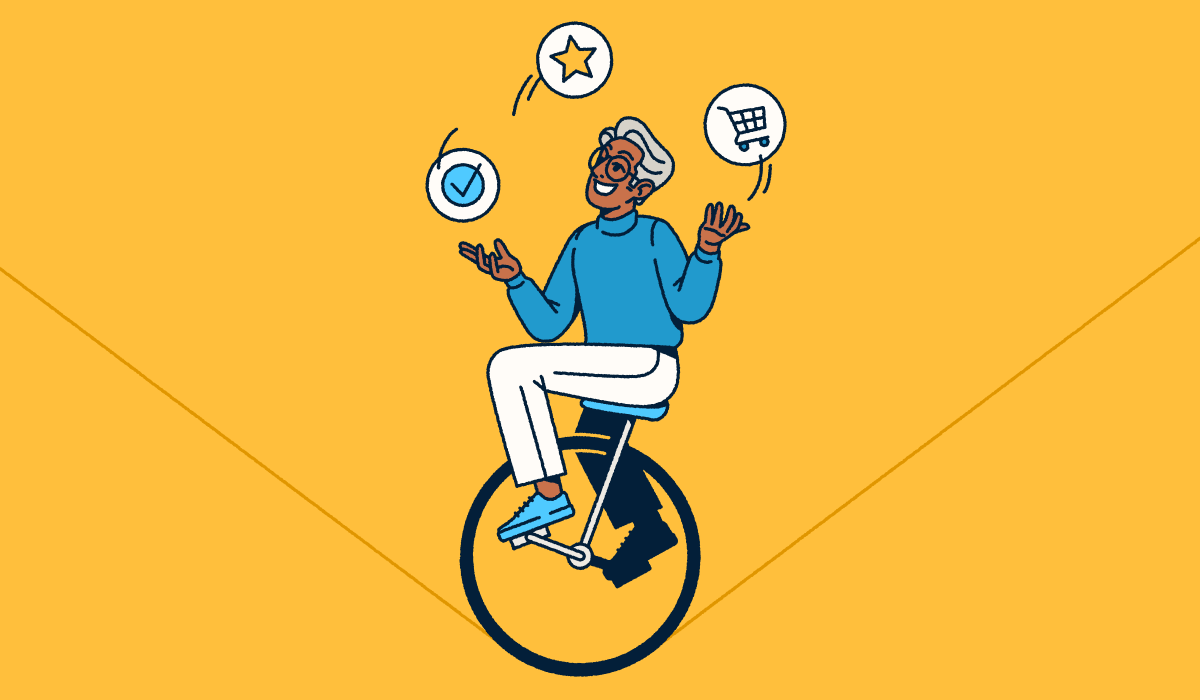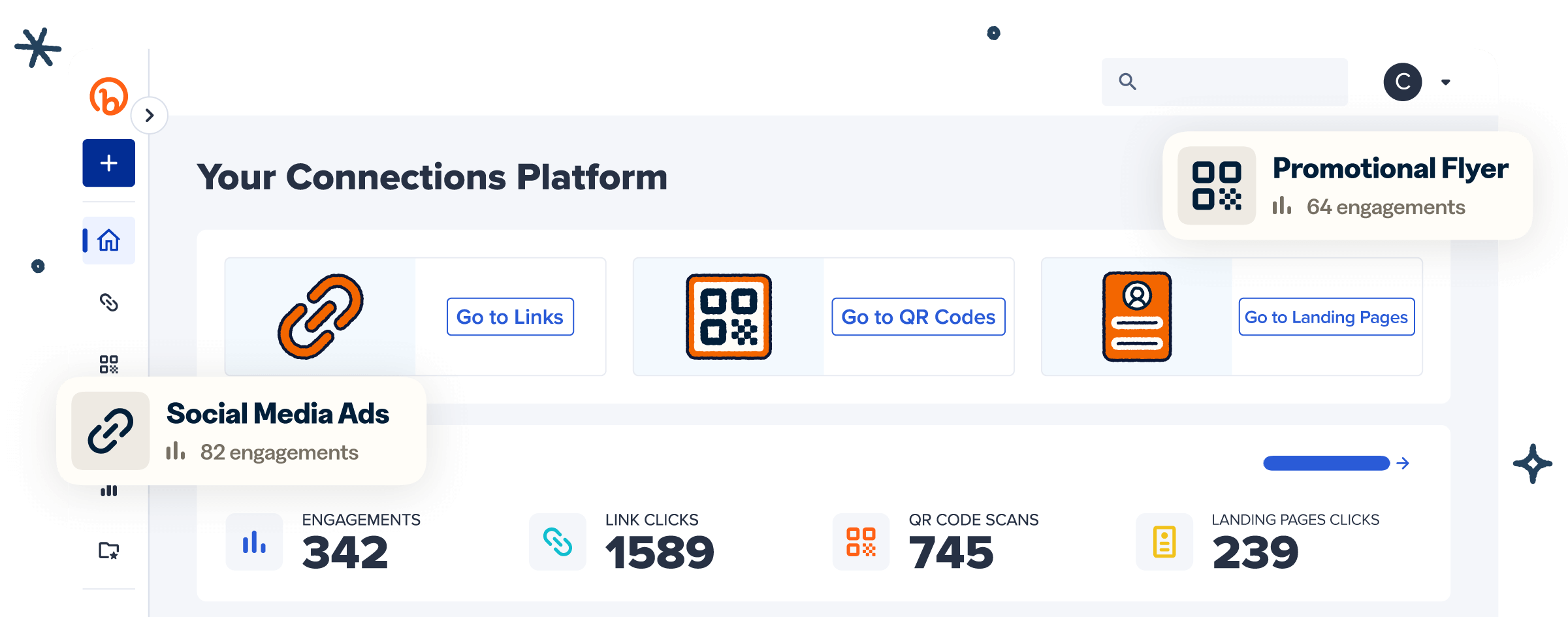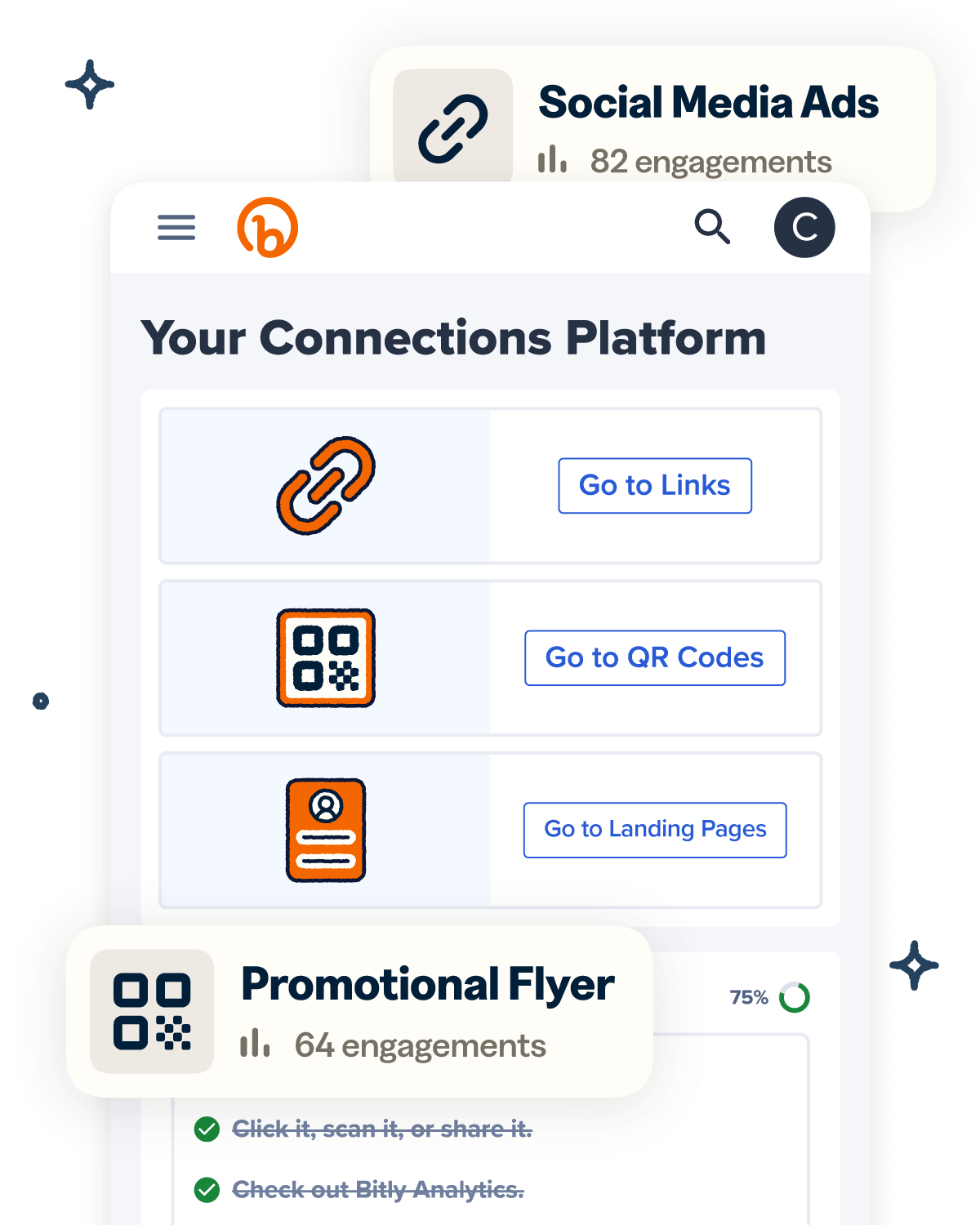Leading relationship expert Dr. John Gottman coined the term “bids for connection” to describe a moment in which someone tries to interact with their partner—reaching out for their hand, asking them about their day, or sharing something they’re excited about. These “bids” make all the difference in helping two people feel close to each other.
While brands’ relationships with their customers are very different from romantic ones, businesses can still learn a thing or two from Gottman. From the first time a potential customer sees your logo to when they become a loyal fan, your audience interacts with your brand through lots of small but pivotal moments. Brands can and should optimize those interactions (also known as touchpoints) to spark brand loyalty, appeal to their audience, and, as with bids for connection, foster lasting relationships.
Let’s explore why these touchpoints matter and five tactical tips to optimize them for brand awareness and revenue growth.
Customer touchpoints: The basics
For decades, marketers have used the term “customer touchpoint” to describe the different ways that a brand reaches out to its audience through a range of channels. Touchpoints occur digitally and in person, via paid and organic channels, and when initiated by the brand or the customer.
A potential customer might encounter a brand they’ll later buy from when they:
- See a billboard from the brand
- Swipe past an Instagram ad
- Pick up an item from store shelves
- Visit a brand’s website for the first time
- Follow or interact with a brand’s social media post
- Notice a shirt or backpack with the brand’s logo
- Receive an email after making a purchase
Today’s consumers rarely decide to buy something after a single interaction. Brands need to play the long game by refining each and every customer touchpoint. Any given interaction might bring them closer to buying—or push them further away.

6 stages of the customer journey
Everyone’s path to becoming a customer is different, but we can still organize the typical touchpoints into six stages of the customer journey. When you know these steps, you can study how your audience moves through each one before (and after) they buy from you.
1. Awareness
Before a customer buys your product, they have to learn you exist—this is how they enter the awareness stage. For complex products or those with longer buying cycles, a customer may need to become aware of a problem they need to solve before they’re even ready to learn about the solutions that exist, including your product.
Awareness touchpoints might include reading an article about a problem they have or seeing an ad that makes them aware of your product.
2. Consideration
After discovering a product or specific brand, customers might enter a consideration period. This could range from online research of multiple brands or the different products you offer to a brief assessment of the options on shelves in stores. Consideration may take anywhere from a few seconds to several months.
Online touchpoints like your website and product pages and in-store experiences like product displays or packaging can play a huge role here.
3. Decision
After making comparisons and conducting research, customers reach the decision stage. They might choose to buy now, or they might opt not to purchase at all. The customer journey is fluid, so if they don’t buy now, they may “end” their journey and either restart it later or come straight to the decision phase again.
Decision touchpoints could look like picking up your product and putting it in their cart or visiting an online shopping cart to begin checkout.
4. Purchase
At the point of purchase, a frictionless experience is essential. If you force shoppers to create an account or ask for information they don’t readily have available, customers may decide they don’t want to buy today.
You can ensure the business of customers who want to buy from you with seamless payment options and by making smart, data-driven upsells or discount offers while they’re in the checkout process.
5. Post-purchase
The customer journey isn’t over after they make their first purchase—far from it. In fact, brands have multiple opportunities to introduce additional touchpoints that can drive loyalty and retention for future purchases.
Post-purchase touchpoints might be order status updates sent via text or email, campaigns with offers for future purchases, packaging links or QR Codes, or satisfaction surveys.
6. Advocacy
After a customer has purchased at least once, they might be willing to not just buy from your brand but spread the word to others. Indications that they’re a raving fan could include repeated purchases, positive reviews, or even shouting out your brand on social media.
You can introduce advocacy touchpoints like sending a special referral offer, thank you gift, or discount in exchange for a product review.
Why optimize your touchpoints
The customer journey is complex, but connecting with your brand shouldn’t be. Every touchpoint is a chance to offer easier, simpler, and more user-friendly interactions.
Brands that ace the customer experience (and ultimately, drive more purchases and satisfaction) pay close attention to their unique audience’s preferences and behaviors. Then, they optimize each touchpoint based on what their customers want. Brands might optimize their touchpoints for:
- Quality. Ensure that any links and processes function as expected to reduce dropoff.
- Personalization. Using data and integrations, brands can better target touchpoints like email campaigns, product recommendations, or special offers.
- Experience. Brands can create more engaging and interactive experiences that span multiple channels or involve not just written text but video or even AR.
No matter your goals, optimize customer touchpoints for audience connections to encourage them to keep coming back.

5 strategies to enhance customer touchpoints
So you want to strengthen your customer interactions—but how do you actually do it? Let’s get tactical. Consider these five best practices to improve every touchpoint for higher conversions, more sales, and deeper loyalty.
1. Map your unique customer journey
Knowing the typical customer touchpoints is just the foundation for optimization—you need to chart how that progression looks for your audience. Dig deep to understand the channels they prefer, the offers that inspire them to take action, and even the friction that costs you the sale.
You can start this research by sending a short link to a survey via text or email to capture satisfaction and learn how they heard about you. You can also gather in-depth information 1:1 through live interviews with your customers to understand how they view your brand and marketing. On an ongoing basis, audience data on how customers interact with and convert from your campaigns (like Bitly Analytics) can reveal what’s working and where you can improve.
Customer research and data also show you any hang-ups where customers drop off, fail to convert, or turn from interested to dissatisfied. Those are moments you need to optimize to drive revenue and retention.
2. Aim for omnichannel
Your customer touchpoints can and should span both physical and digital channels. Take an omnichannel approach that considers their other interactions with you and creates a consistent, unified journey.
- Add a QR Code to packaging so shoppers can scan with their mobile phones to visit your website or learn about your brand ethos.
- Provide a simple short link on a billboard that’s easy to remember and type to visit a mobile-friendly landing page like Bitly Pages.
- Take your trade show booth or pop-up event online with a discount offer in exchange for signing up for your email list or texts, then send short links with context-driven, personalized offers.
Extending an in-person experience to online channels keeps customers’ attention longer and lets them engage with your brand again later on their own terms. These strategies are more convenient and user-friendly to help customers further their connection with you.
3. Think like your customers
Put yourself in your customers’ shoes. Do you know what they are and aren’t willing to do to interact with you? For instance:
- Most (if not all) customers aren’t willing to type in a long URL to visit your website—especially from a social media comment or physical ad.
- Your audience needs certain types of information at particular points in their shopping journey.
- Customers want a secure order status update, but they might not want to sign into their account to get the latest details.
Once you understand what your customers need, you can proactively meet those needs at every touchpoint.
Instead of a long URL, share a scannable QR Code instead. Anticipate their needs with a Frequently Asked Questions pop-up on your website or a well-timed email or text while they’re still thinking about buying. Send a secure, personalized short link via text that they can click to check on their order, using the Bitly API. (Koozie Group does this to the tune of thousands of order updates per month.)
When customers encounter convenient, user-friendly paths to interact with you, you maximize the changes they’ll browse, follow, or buy with every touchpoint.

4. Experiment with data to optimize
Strengthening your audience touchpoints isn’t a one-and-done project. It’s an ongoing process of iterating and improving each interaction with your audience—and data is the key ingredient.
An analytics dashboard like Bitly Analytics lets you review the big picture of your campaigns and the performance of individual short links and QR Codes. Examine what’s working with your strongest campaigns and what you need to change about low-performing campaigns.
For instance, maybe an awareness-driven email campaign is getting clicks but purchases are low. Look more closely at the user experience on your website to improve that touchpoint. Maybe the Bitly Analytics dashboard reveals that a QR Code campaign is performing well in Los Angeles but not in New York City. The data is telling you to learn more about your audience in NYC so you can change the positioning or channel for better performance in the Big Apple.
Follow the data, and try changing different elements of your campaigns at each touchpoint. Over time, you’ll learn what resonates with your audience and build a better customer journey.
5. Create “quality time” moments with your customers
While there’s a time and place to encourage customers to make a purchase, your relational touchpoints should outnumber transactional ones. Focus your campaigns on offering value at each touchpoint.
On an episode of the Marketing with Matt podcast, Matt Deseno argues that touchpoints are the wrong concept altogether, encouraging brands to instead foster “quality time” with customers. He advises aiming for not just quantity of customer engagement (such as time spent on a webpage or in a store) but zeroing in on the quality of those touchpoints.
Aim for experiential moments with your customers:
- Lean into engaging channels like video, where you can express your brand personality or share in-depth information.
- Rather than a static link-in-bio page, build a user-friendly landing page with multiple media types for one-stop-shop interactions.
- Turn any package into an opportunity to learn about your brand’s sustainability practices, shop online options, or explore additional content with a QR Code.
Instead of jumping straight to the sale or offering something that may not be relevant to them, prioritize customer relationships. A strong audience connection sparks not just one purchase but positive brand perception, word-of-mouth recommendations, and long-term retention.
Turn touchpoints into connections with Bitly
Customer touchpoints don’t exist in isolation. Instead, they’re part of an entire relationship. So treat each one not as a bid for impressions, clicks, or purchases but as a bid for connection. Yes, your goal is brand awareness and revenue growth. But you’ll reach those goals by focusing on connections with your customers across all touchpoints.
With Bitly, you can foster more engaging interactions via both physical and digital channels and learn more about your audience with every scan or click. Go from point solutions to the Bitly Connections Platform for better engagement and data-driven marketing your customers will love for the long haul.




